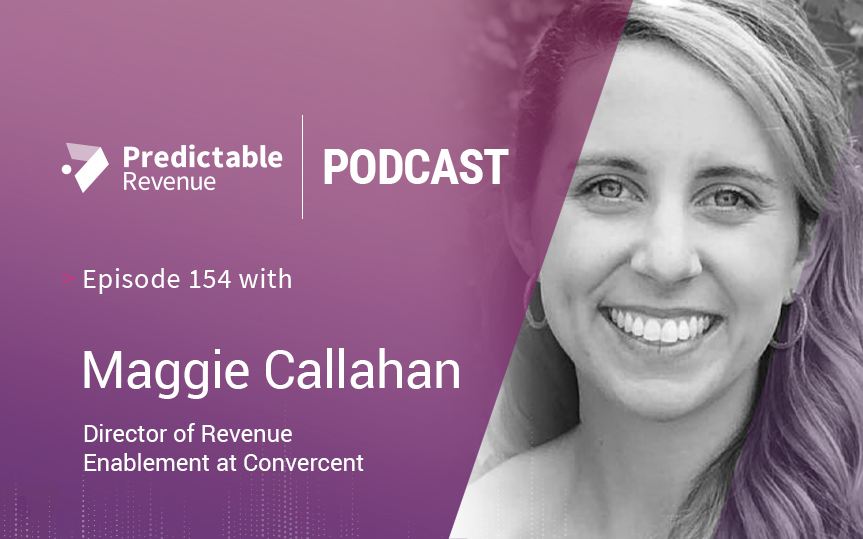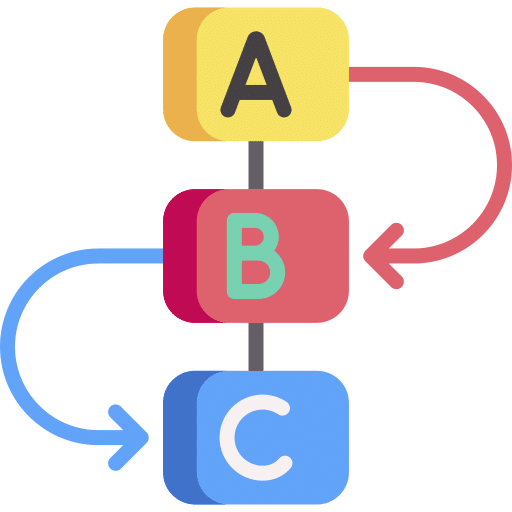How to Focus on Building an Effective Revenue Enablement Function

Enablement is a popular word in the startup world these days. And, rightfully so: enablement is a critical function, it’s very nature is to support and propel different departments to best achieve their critical goals.
Despite its importance, the widespread nature of its existence can make defining enablement tricky. For instance, are we talking about sales enablement? Marketing enablement? Even customer success enablement?
Each function could equally use, and benefit from, enablement support. As such, the scope of this function can quickly take on a life of its own.
That’s why defining the scope of your enablement needs is critical, says Maggie Callahan, Director of Revenue Enablement at Convercent, on a recent edition of The Predictable Revenue Podcast. You can tackle as much, or as little, as you want – you just need to be clear about what you’re taking on.
“There are a couple ways to think about enablement. Some people have marketing and sales siloed. Some people have Customer Success siloed,” says Callahan.
The way I think about it is – any revenue-generating department that affects the revenue of the lager team is part of our enablement function.
Revenue enablement
The breadth of revenue enablement at Convercent is significant – as Callahan says, it encompasses every generating – but it all begins with product. You need the best product, and you need to have product leaders, inspire the rest of the team, says Callahan.
From there, revenue enablement leads into marketing – which includes podcasts, campaigns etc. – sales, and, finally, customer success, which includes upsells and account expansion.
All of this is impacted by revenue enablement, and it should be considered and, of course, supported.
Organizing revenue enablement’s many tasks
Executing on a revenue enablement program like this one, says Callhan, requires a ruthless dedication to focusing on only the essential parts of the business.
At Convercent, that means honing on three foundational pieces of every job:
- Knowledge – what do I need to understand to do my job? (What does our product do? What is our market? What methodology, or methodologies, do we follow?)
- Skills – what are the skills required to optimize the knowledge I need to do my job?
- Tools – what tools can we train our teams on to optimize the skills needed and enable the knowledge required?

“As a new enablement leader, you need to take inventory of all of the things that sit in those pillars. That means understanding the inventory of the tools you need and so on. You really have to do your due diligence in observing,” says Callahan.
I had a hard time being patient with our sales calls, for instance, because I thought we knew exactly what we needed because I came from sales. But, you have to listen and make sure it works for your organization. Make no assumptions.
Getting buy-in and ranking priorities
Once you outline the foundational pillars your organization’s jobs need to consider, it’s important to get buy-in from everyone affected. It’s easy to assume that getting buy-in for enablement needs should come from executives, leaders, and managers, says Callahan.
But the key to great enablement is getting buy-in from individual contributors because they’re the ones that execute on critical responsibilities, day in and day out.
“Some people think it’s okay just to survey leaders in the company. But, the key to great enablement is to get the buy-in from boots on the ground soldiers,’ says Callahan.
“That really shapes how the larger focusing begins.”
Once you have the team bought into the concept of revenue enablement, and the intended support it will bring, it’s important to prioritize the enablement initiatives you will focus on. To be sure, there will be numerous enablement issues you could do. In fact, if your enablement umbrella encompasses every revenue-generating department, you’ll likely have too many potential projects.
So you’ll have to focus on only a few of the most impactful.
To do so, says Callahan, ask both company leaders and individual contributors to rank their priorities. Based on those results, she determines the priorities enablement will focus on for, say, the coming quarter.
“You have to identify the knowledge gaps and give options for people to fix those gaps. For example, when we implemented Outreach and needed to get our prospecting function off the ground, we realized no one really knew how to use Outreach yet,” says Callahan.
So make sure you have the team rank these things, so you can focus on what to do next.
The importance of retention
Finally, for an enablement function to actually make an impact, your team has to accept and retain the new processes that come along with it. How well it’s retained, of course, will be affected by the team you have in place: new leaders, for instance, may have an easier time incorporating new tactics.
But, it also requires an enablement leader to be organized, and provide the team with relevant documents that support whatever the program in question is.
For example, if your team has new managers and leaders, coaching may be an enablement feature you focus on during a particular quarter. If you choose to have weekly training sessions – implementing a new process or skill will require a regular training cadence, whether it be weekly or bi-weekly – the enablement team should send out an info package with relevant books, podcasts, and articles, so the team can prepare for the information they are about to learn or hone.
That preparation material helps set the right foundation.
“It can be so hard for people in a role like mine, who lead acoss department, to really want to please people and be reactive to every request that comes in,” says Callahan.
But, in laying it out this way, with very clear expectations regardless of what we’re training on, has been very influential in how our team focuses and incorporates new information.
For more on Callahan’s thoughts on revenue enablement – including details on a template she uses to plan enablement processes, as well as an effective survey she uses for revenue enablement prioritization – check out the rest of her interview on The Predictable Revenue Podcast.
NO TIME TO READ?
Experience and a lot of testing have shown us that it is possible to create email templates that people actually resonate with.
You don’t have to figure it out alone, whether you’re starting off as a sales representative, looking to improve your game or providing your team with expert advice, we have your back!